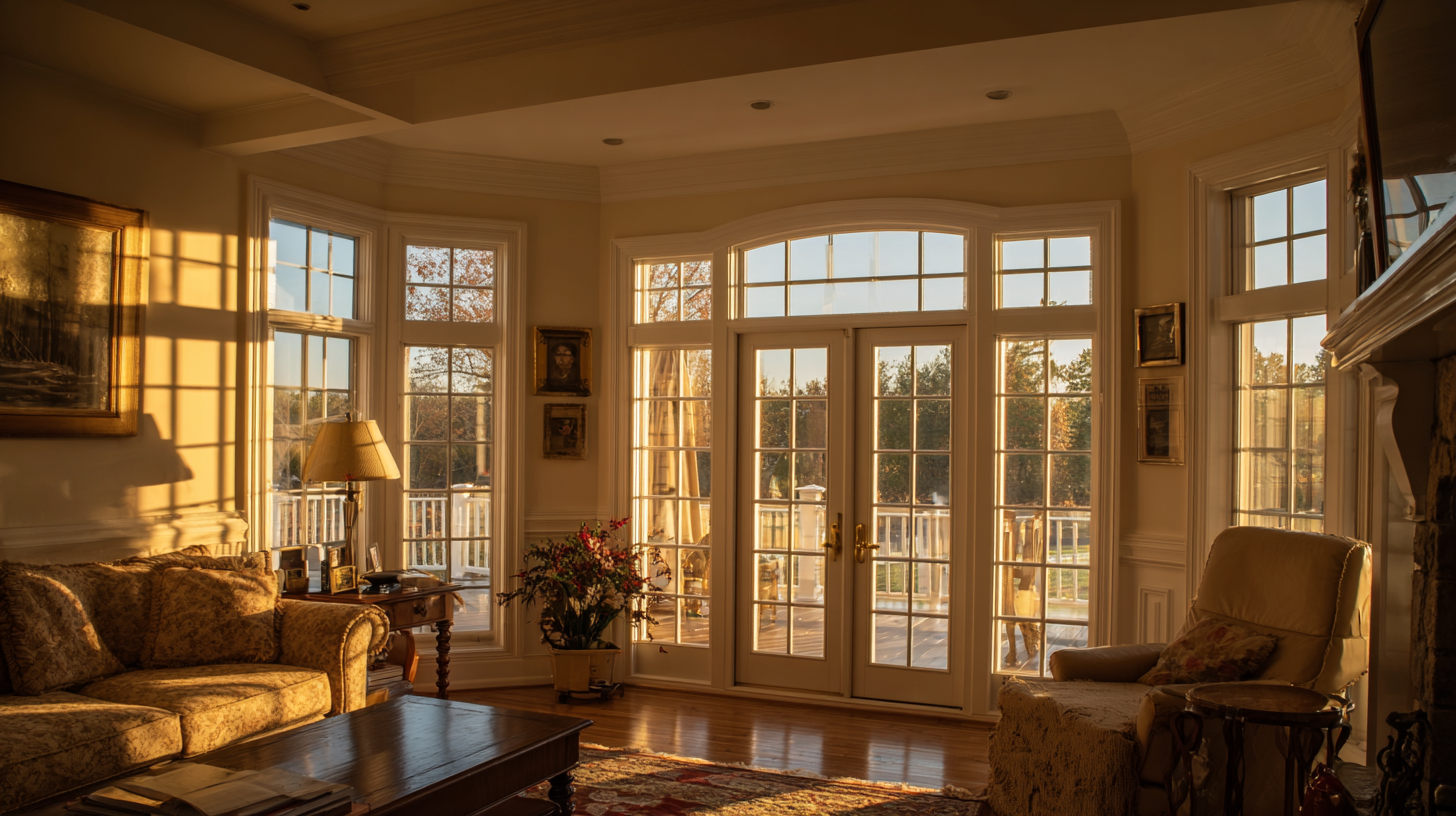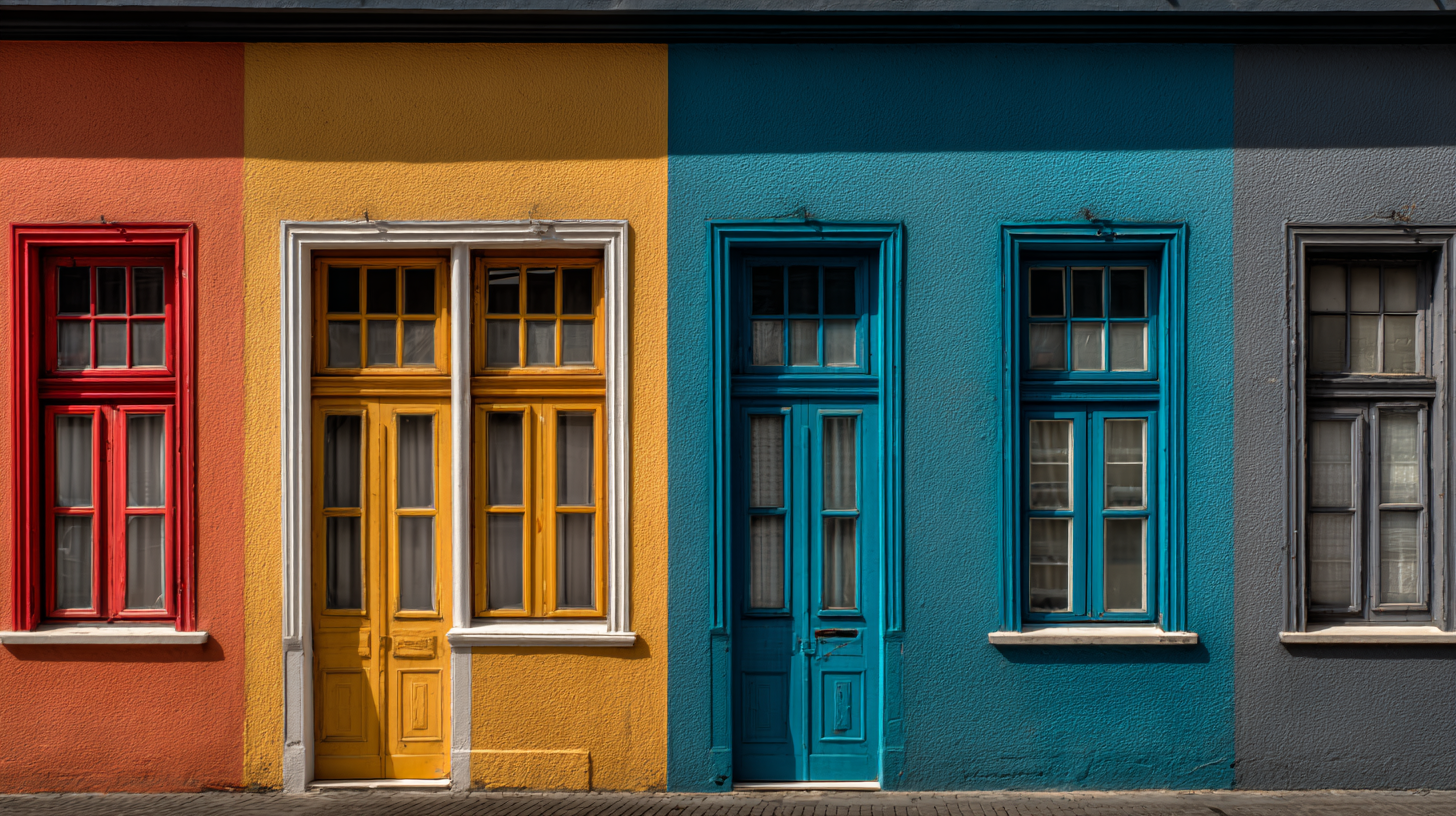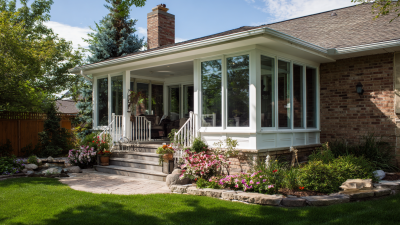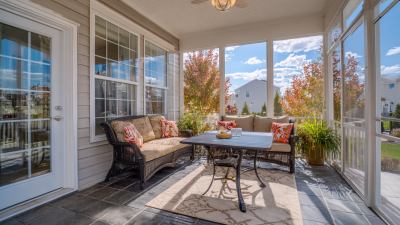Maximizing Energy Efficiency: The Impact of Quality Windows and Doors on Home Insulation
 In the quest for optimizing energy efficiency within our homes, the role of quality windows and doors cannot be overstated. These essential components are not merely aesthetic additions; they serve as the first line of defense against external temperature fluctuations, significantly impacting overall insulation performance.
Poorly designed or outdated windows and doors can lead to substantial energy losses, translating into higher heating and cooling costs. Conversely, investing in high-quality, energy-efficient alternatives can markedly enhance a home's thermal envelope, thereby reducing energy consumption and increasing comfort.
As homeowners increasingly prioritize sustainability and energy savings, understanding the substantial impact of quality windows and doors on insulation becomes crucial for making informed purchasing decisions. This exploration aims to illuminate the specific benefits and best practices for selecting windows and doors that contribute to maximizing energy efficiency in residential settings.
In the quest for optimizing energy efficiency within our homes, the role of quality windows and doors cannot be overstated. These essential components are not merely aesthetic additions; they serve as the first line of defense against external temperature fluctuations, significantly impacting overall insulation performance.
Poorly designed or outdated windows and doors can lead to substantial energy losses, translating into higher heating and cooling costs. Conversely, investing in high-quality, energy-efficient alternatives can markedly enhance a home's thermal envelope, thereby reducing energy consumption and increasing comfort.
As homeowners increasingly prioritize sustainability and energy savings, understanding the substantial impact of quality windows and doors on insulation becomes crucial for making informed purchasing decisions. This exploration aims to illuminate the specific benefits and best practices for selecting windows and doors that contribute to maximizing energy efficiency in residential settings.
Benefits of High-Quality Windows and Doors for Energy Efficiency
Investing in high-quality windows and doors can significantly enhance your home's energy efficiency. These critical components play a vital role in maintaining optimal insulation. High-quality windows typically feature advanced glazing options and insulating frames that reduce heat transfer, keeping your home cooler in the summer and warmer in the winter. Similarly, well-crafted doors can create airtight seals, minimizing drafts and ensuring that your heating and cooling systems work more effectively.
Tip: When selecting windows and doors, look for those certified with Energy Star ratings. These products have been tested for efficiency and can help lower your utility bills.
Beyond immediate energy savings, quality windows and doors also enhance your home's comfort and aesthetic appeal. They reduce noise pollution from outside, creating a more serene living environment. Additionally, modern designs can significantly boost your home's curb appeal, potentially increasing its market value over time.
Tip: Consider adding window treatments such as insulated shades or thermal curtains to provide an extra layer of insulation, further improving your energy efficiency.
Maximizing Energy Efficiency: The Impact of Quality Windows and Doors on Home Insulation
| Window/Door Type | U-Value (W/m²K) | Solar Heat Gain Coefficient (SHGC) | Air Leakage (cfm/ft²) | Estimated Annual Energy Savings ($) |
|---|---|---|---|---|
| Double Glazed Window | 1.2 | 0.40 | 0.1 | $150 |
| Triple Glazed Window | 0.9 | 0.30 | 0.06 | $250 |
| Low-E Coated Window | 1.1 | 0.35 | 0.08 | $200 |
| Fiberglass Door | 0.15 | 0.25 | 0.03 | $350 |
| Steel Frame Door | 0.20 | 0.20 | 0.02 | $300 |
Understanding U-Values: The Key to Effective Insulation in Your Home
 When it comes to improving home insulation, understanding U-values is crucial. U-values measure the thermal transmittance of building components, indicating how effective they are as insulators. According to the National Fenestration Rating Council (NFRC), windows and doors with lower U-values provide better insulation, leading to reduced energy consumption and increased comfort. For instance, a window with a U-value of 0.20 allows less heat to escape compared to one with a U-value of 0.35, which, over time, can result in significant energy savings.
When it comes to improving home insulation, understanding U-values is crucial. U-values measure the thermal transmittance of building components, indicating how effective they are as insulators. According to the National Fenestration Rating Council (NFRC), windows and doors with lower U-values provide better insulation, leading to reduced energy consumption and increased comfort. For instance, a window with a U-value of 0.20 allows less heat to escape compared to one with a U-value of 0.35, which, over time, can result in significant energy savings.
Moreover, choosing quality windows and doors isn't just about aesthetics; it has a profound impact on overall energy efficiency. The Department of Energy reports that up to 30% of residential heating and cooling energy use can be attributed to air leakage through these openings. By selecting windows and doors with low U-values and proper sealing, homeowners can mitigate heat loss in winter and gain in summer, ultimately lowering utility bills. Investing in high-performance fenestration products can support both environmental sustainability and economic savings in the long run.
Top 5 Energy-Efficient Window Styles for Homeowners
When it comes to enhancing energy efficiency in homes, choosing the right window styles is crucial. Modern energy-efficient windows not only reduce heating and cooling costs but also contribute significantly to overall home insulation. Here, we explore the top five energy-efficient window styles that can transform any home into an eco-friendly haven.
First on the list is the double-hung window, known for its versatility and classic aesthetic. These windows can be opened from both the top and bottom, allowing for improved ventilation while minimizing heat loss. Next, casement windows are highly efficient due to their tight seal when closed, making them perfect for energy conservation. They open outward, providing unobstructed views and enhanced airflow.
Thirdly, sliding windows offer ease of use and a contemporary look while also being energy-efficient. Their design limits air leakage, maintaining the interior climate effectively. Additionally, picture windows, which are fixed and do not open, provide excellent insulation and natural light. Finally, bay and bow windows extend the living space and enhance insulation due to their multi-pane design, promoting overall energy efficiency. Each of these styles contributes significantly to a home’s insulation performance, making them excellent investments for homeowners looking to reduce energy consumption.
Choosing the Right Door Materials for Maximum Thermal Performance
When it comes to maximizing thermal performance in a home, selecting the right door materials plays a crucial role. Different materials offer varying levels of insulation, durability, and energy efficiency. For instance, fiberglass doors are excellent insulators; they do not warp or crack like wood can, providing a longer-lasting solution for keeping homes warm in winter and cool in summer. Additionally, fiberglass can be designed to mimic the look of wood, giving homeowners the aesthetic appeal without compromising on energy efficiency.

On the other hand, steel doors are known for their incredible strength and security features. While they may not insulate as effectively as fiberglass, they often come with a foam core that enhances thermal performance. For those living in extreme climates, combining steel doors with appropriate weather stripping can prevent drafts and enhance energy efficiency. By considering these materials and their thermal properties, homeowners can make informed choices that significantly improve their home insulation, ultimately leading to reduced energy costs and a more comfortable living environment.
Essential Maintenance Tips to Enhance Window and Door Lifespan
To enhance the lifespan of windows and doors, regular maintenance is paramount. One essential tip is to inspect and replace weather stripping regularly. Over time, weather stripping can wear out, leading to drafts that compromise energy efficiency. By ensuring that seals are intact, homeowners can prevent air leaks and maintain optimal insulation within their homes.
Another critical aspect of maintenance is cleaning the frames and glass surfaces. Debris and dirt can accumulate, impacting the function and appearance of windows and doors. A simple solution involves using mild soap and water, followed by a thorough rinse. Additionally, lubrication of hinges, locks, and slides helps ensure that these mechanisms operate smoothly, reducing the risk of damage and prolonging the lifespan of the units. Regular inspections for any signs of damage or wear can also aid in early detection of issues, allowing homeowners to address them before they escalate.
Maximizing Energy Efficiency: The Impact of Quality Windows and Doors on Home Insulation
Quality windows significantly affect home insulation and energy efficiency. The chart illustrates the average energy loss through different window types, demonstrating that triple pane windows offer the best insulation, greatly reducing energy loss compared to single and double pane windows.
Related Posts
-

Transform Your Living Space: The Ultimate Guide to Home Windows Replacement for Energy Efficiency
-

7 Must Know Tips to Enhance Your Bay Windows Experience
-

Why Sash Windows Are the Timeless Choice for Modern Homeowners
-

The Ultimate Guide to Choosing and Installing Your Perfect Patio Door
-

Exploring Window Replacements Trends at the 138th Canton Fair China 2025
-

The Ultimate Guide to Choosing the Best Patio Door Installation for Your Home
